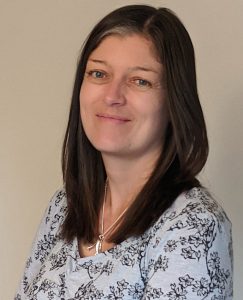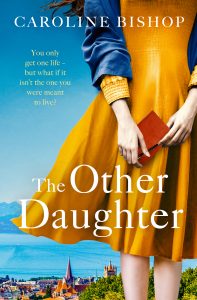How I learned to write
 By Caroline Bishop
By Caroline Bishop
It’s said that everyone has at least one book in them. That may be true, but that doesn’t mean everyone is able to translate the brilliant idea in their head into half-decent words on a page. And unless you’re particularly prodigious, that novel won’t pour out of you perfectly formed, ready to be published.
Writing is a job, and like any job, it has to be learned and practised; it is a skill to be honed, a craft to be mastered.
That probably sounds obvious, but it wasn’t to me when I first tried to write a novel. In fact, I hadn’t really thought about it. I’d always loved reading and writing (I was once ticked off by my school English teacher when my essay comparing The Remains of the Day and A Room with a View stretched to 17 pages, so much I loved those books). I’d written my own stories from a young age and later became a features journalist – something I trained for at university. But when it came to tackling a novel, it didn’t occur to me you could train for it, or study it. I just thought I’d sit down and have a go.
Nothing wrong with that – except that I didn’t get very far. I had a vague idea about a Sliding Doors-type story, but I had no real sense of the plot, what my characters wanted or the theme of the book. I wrote maybe 20,000 words of waffle until I hit a brick wall. I didn’t have a clue what I was doing.
Foolishly, I didn’t learn from this. I didn’t do any creative writing courses; I didn’t join a writing group; I didn’t read anything about how to write. I think I presumed that as long as you could string a sentence together, the rest of it was down to some mysterious alchemy that occurred organically during the writing process. Funnily enough, no alchemy took place and my second effort at writing a novel, although resulting in a complete manuscript this time, wasn’t very good.
Years later I decided to have a third go. Again, I started with a vague idea and began writing. Again, I flailed about until my book ground to a halt. My problem, I can see with hindsight, was that I loved the act of writing so much that I just wanted to do it, I didn’t want to spend time thinking about how.
But – finally! – this time I recognised the error of my ways. I stopped typing aimlessly and bought Stephen King’s On Writing, the first book about writing I’d ever read. I liked it. I learned a thing or two. Then I bought another – John Yorke’s Into The Woods – and it was this book that changed everything for me. It introduced me to story arcs and character development, to inciting incidents and midpoints and resolutions. It was like glimpsing behind the emerald curtain and finally realising what the Wizard of Oz was up to.
After that I reread my favourite books in a different way, analysing how the authors constructed scenes, how they developed characters and gave them obstacles and desires and journeys. I saw how they integrated backstory without exposition, how they dealt with point of view and multiple timelines, how they – knowingly or not – applied the storytelling principles Yorke talked about. In short, I studied the craft.
I returned to my abandoned novel – what is now The Other Daughter – with new eyes. However, despite my self-study programme, halfway through I started to flounder again. To help me get through the sticky middle, I signed up to a six-week online course with Curtis Brown Creative, handily titled ‘Write to the End of Your Novel’. From this, I learned techniques for planning and plotting, which helped this natural ‘pantser’ bring a little forward momentum to what I was doing. The course also allowed me to interact with other writers, so I could learn from reading their work and hearing their feedback on mine.
Finally, I got to the end of a first draft. As a journalist, I’m used to editing my own work again and again, honing and shaping the words I’ve put on a page – but normally a 1,000-word feature, not a 90,000-word book. Once again, I turned to the experts. The book Self-Editing for Fiction Writers by Renni Browne and Dave King gave me tools for polishing my prose, killing my darlings, strengthening characters and showing instead of telling.
Eventually, I felt ready to send my manuscript out to agents – but the learning didn’t stop when I signed with Hayley Steed at Madeleine Milburn Literary Agency and she helped me hone my novel further. Neither did it stop when I got a publishing deal with Simon & Schuster UK and went through the process of structural edits, line edits and copy edits with my editor Bec Farrell. Neither will it stop when The Other Daughter is published; writing my second book has felt like a different experience due to everything I’ve learned and am still learning. I hope I’ll continue to learn and practise and hone my craft when I’m on my sixth, tenth, twentieth (!) book. Because while I do think mysterious alchemy has some small part to play in producing a novel (at least in finding your own, unique ‘voice’), a much bigger part of it is simply about learning the job.
—
Caroline Bishop is a British freelance journalist, editor and author currently living in Switzerland. In the past 15 years she has written about travel, food and theatre for newspapers, magazines and websites in the UK and Switzerland. The Other Daughter is her debut novel.
www.facebook.com/carolinebishopauthor
www.instagram.com/carolinebishopauthor
THE OTHER DAUGHTER
 You only get one life – but what if it isn’t the one you were meant to live?
You only get one life – but what if it isn’t the one you were meant to live?
When Jessica discovers a shocking secret about her birth, she leaves her London home and travels to Switzerland in search of answers. She knows her journalist mother spent time in the country forty years earlier, reporting on the Swiss women’s liberation movement, but what she doesn’t know is what happened to her while she was there. Can Jess summon the courage to face the truth about her family, or will her search only hurt herself and those around her even more?
Set across a stunning Swiss backdrop, The Other Daughter follows one woman in her search for the truth about her birth, and another desperately trying to succeed in a man’s world. Perfect for fans of Tracy Rees, Elizabeth Noble and Kathryn Hughes.
‘Well written and pacy. Full of gorgeous scenery, emotion and SUCH fascinating stuff about women’s rights through the decades’ Tracy Rees, author of The House at Silvermoor
Buy link: https://www.simonandschuster.co.uk/books/The-Other-Daughter/Caroline-Bishop/9781471190056
Category: How To and Tips































Love how you humbly describe the difference between wanting something and working for something. I think we look at idols in every field and think they are lucky or gifted… when in fact it’s hard work and good habits and lifelong study.